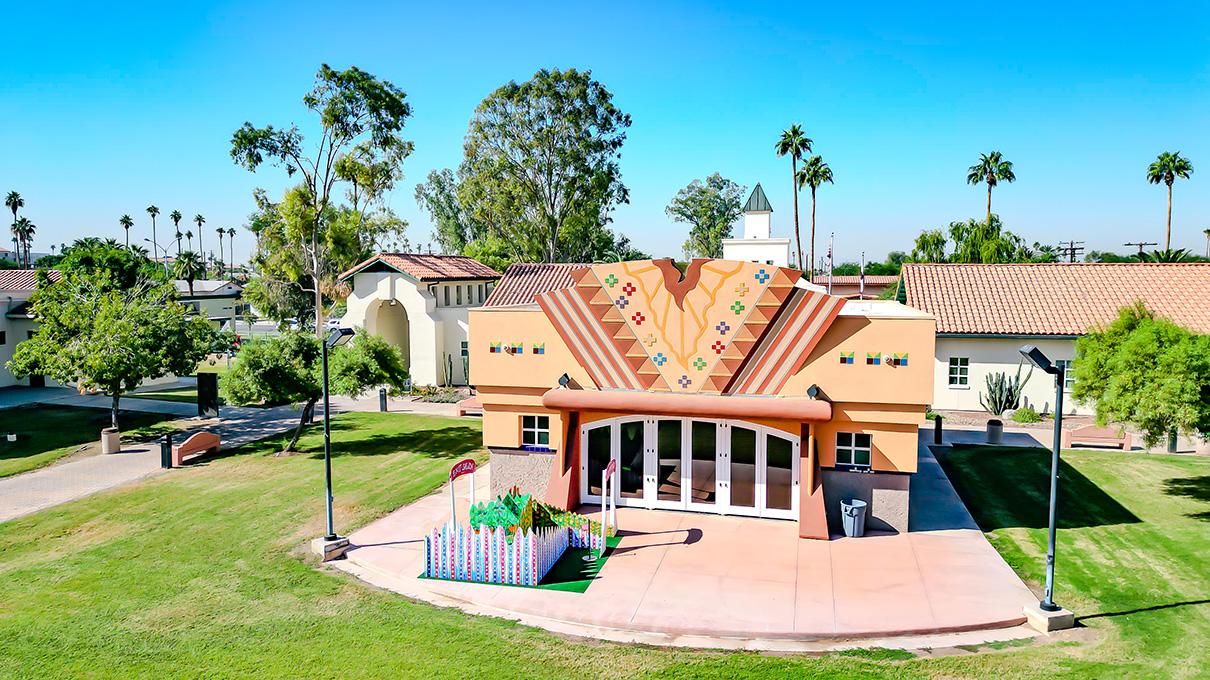The Sage Project: A Decade of Sustainable Success
SDSU students participate in real-world projects that contribute to the quality of life and sustainability goals of their community partners

The Sage Project at San Diego State University is celebrating a decade of sustainable success through community-based projects. The program has challenged environmental injustice with the help of more than 5,300 students since its beginning.
Run by Jessica Barlow, the Executive Director of the Center for Regional Sustainability, and Kristofer Patrón-Soberano, the Center for Regional Sustainability Program Administrator — the Sage Project has taken on the initiative of helping to improve the quality of life through a series of community-based projects locally and globally.
“We have a sort of internal motto of under promising and over delivering, so we promised the minimum that we know we can do,” Barlow said. Students in The Sage Project participate in real-world projects that contribute to the sustainability goals of their community partners.
“We end up doing a whole lot more that ends up being amazing because students are amazing,” said Barlow.
For a decade, Barlow and students and faculty from across campus have been digging deep into environmental justice and support for neighboring cities. Recently, the Sage Project connected with the Brownfields Project in National City. Brownfields refer to properties or redevelopments that can cause complications due to possible pollution and contamination.
“The thing about brownfields is they tend to be more prevalent in lower-income communities, communities of color and National City is no exception,” said Barlow. “Many communities that have a lot of brownfields have been subjected to a lot of environmental racism.”

Since 2013, the program’s unique and impactful approach has teamed up faculty members and students at SDSU to opt in on projects they want to join. This has been performed through a series of 83 projects, 87 faculty members, and 168 assistants and internships. The Sage Project has endlessly devoted over 300,000 hours of service to the community to address sustainability and improve environmental justice.
“I really enjoyed that they were working in a community that I grew up in because I'm from Southeast San Diego,” says Alejandra Hernandez, a second-year poetry MFA student at SDSU.
Everything The Sage Project does connects and intersects with issues regarding sustainability and is not restricted to the duty of one professional field of study. This includes the multiple cities in southern California and northern Baja California that have all been supported by the program.
“I think we can translate a lot of community engagement work in particular to another community in the region. But I think it's also something that we could share as an example, you know, across the country too,” Barlow said.
“There's usually a whole range of different types of projects, from civil engineering kinds of projects that look at stormwater runoff to more geography-based projects that maybe focus on geographic information systems mapping.”
Over the last few recent years, The Sage Project has also helped the City of Santee map private storm drain inlets; it produced urban planning designs for the City of Lemon Grove; and produced a “zero waste” strategy for the City of La Mesa. And, in California’s Imperial Valley where the summer heat can send temperatures soaring over 100 degrees Fahrenheit, faculty and students worked within the region to explore effective solutions to El Centro’s homeless crisis.
Sage Project students have also collaborated with the City of Tijuana to redesign public parks in underserved neighborhoods.

Setting the tone globally for creating a sustainable community and environment, The Sage Project has spent years leading training workshops and conferences by being a part of the Educational Partnerships for Innovation in Communities - Network (EPIC-N). This network comprises regions outside the United States, including Latin America and the Caribbean, as well as Asia and Africa.
“I did a presentation about the model at a conference in Bonn in Germany in 2016, called the Resilient Cities Conference, and we were invited to do a training workshop in South Africa,” said Barlow.
The Sage Project has also demonstrated its notable success through the involvement of different departments on campus throughout the decade. This serves as an opportunity for students to apply their skills from subjects such as geography, speech, language and hearing, sociology and history to see how they can better the quality of life in San Diego.
“We have a class in Speech, Language and Hearing Sciences, which is going to be interviewing older adults about their experiences with life, like, how properties have changed over time or how land use has changed over time, and how they engage with nature,” Barlow said.
As The Sage Project takes on its tenth year, it continues to follow its same goals and initiatives to foster sustainability efforts. In the future, The Sage Project plans to continue its work in other communities that would like added capacity to help them implement their sustainability-related projects.
“I think it was helpful to be a part of that creative nonfiction class so that I can learn how to do oral histories, how to talk to people in the community and stuff like that. That's definitely something that I'm going to value for the rest of my life,” says Hernandez.


